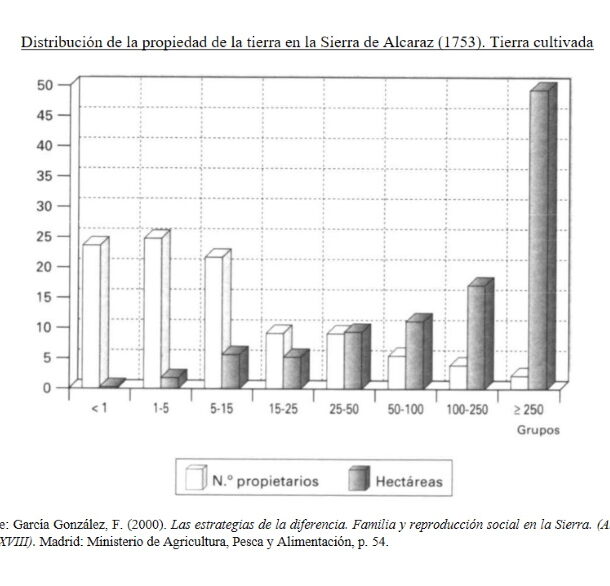
The Modern Age was marked by numerous food, economic, climatic, epidemiological and even war crises. In the latter case, the War of the Spanish Succession (1701-1714) left its mark on the price of a bushel of wheat. Between these years, we can see how in Murcia, Cuenca and Jaén the price per bushel of wheat fell at the beginning of the war and increased progressively as the battles reached the territories analysed. Murcia and Cuenca are the main exponents of the graph, with sharp rises between 1708 and 1710, while the north of Castile and Jaén increased to a lesser extent. The price of wheat directly affected bread, a basic product in the Spanish diet. In Cuenca, the corregidor declared an end to the bread shortage in 1714 due to the abundant harvest of that year. During this period, the general increase in prices, together with the military levy and mortality, the demographic structure was affected; fewer baptisms and the accentuation of social imbalances.
Collection: Graphics
Project: 2. Social and economic impact of technological revolutions in Europe., 3. Rural world and urban world in the formation of the European identity.
Chronology: XVIII
Scope: Secondary Education, Baccalaureate, University
Link: https://adeh.org/wp-content/uploads/2020/09/ADEH-2020-1-Victor-Alberto-Garcia-Heras.pdf
Resource type: Graph
Format: Line chart
Source: García Heras, Víctor Alberto. (2020). “Crisis poblacional: Escasez, conflicto y mortalidad. La guerra de Sucesión en Cuenca”, en Revista de Demografía Histórica, vol. 38, nº 1, p. 12.
Language: Spanish
Date: 2020
Owner: Pablo Ballesta Fernández (Modernalia)
Copyright: © Víctor Alberto García Heras © Revista de Demografía Histórica
Abstract: Fluctuations in the price of a bushel of wheat (1700-1712) according to crises and wars; showing their impact on demography
Tags






